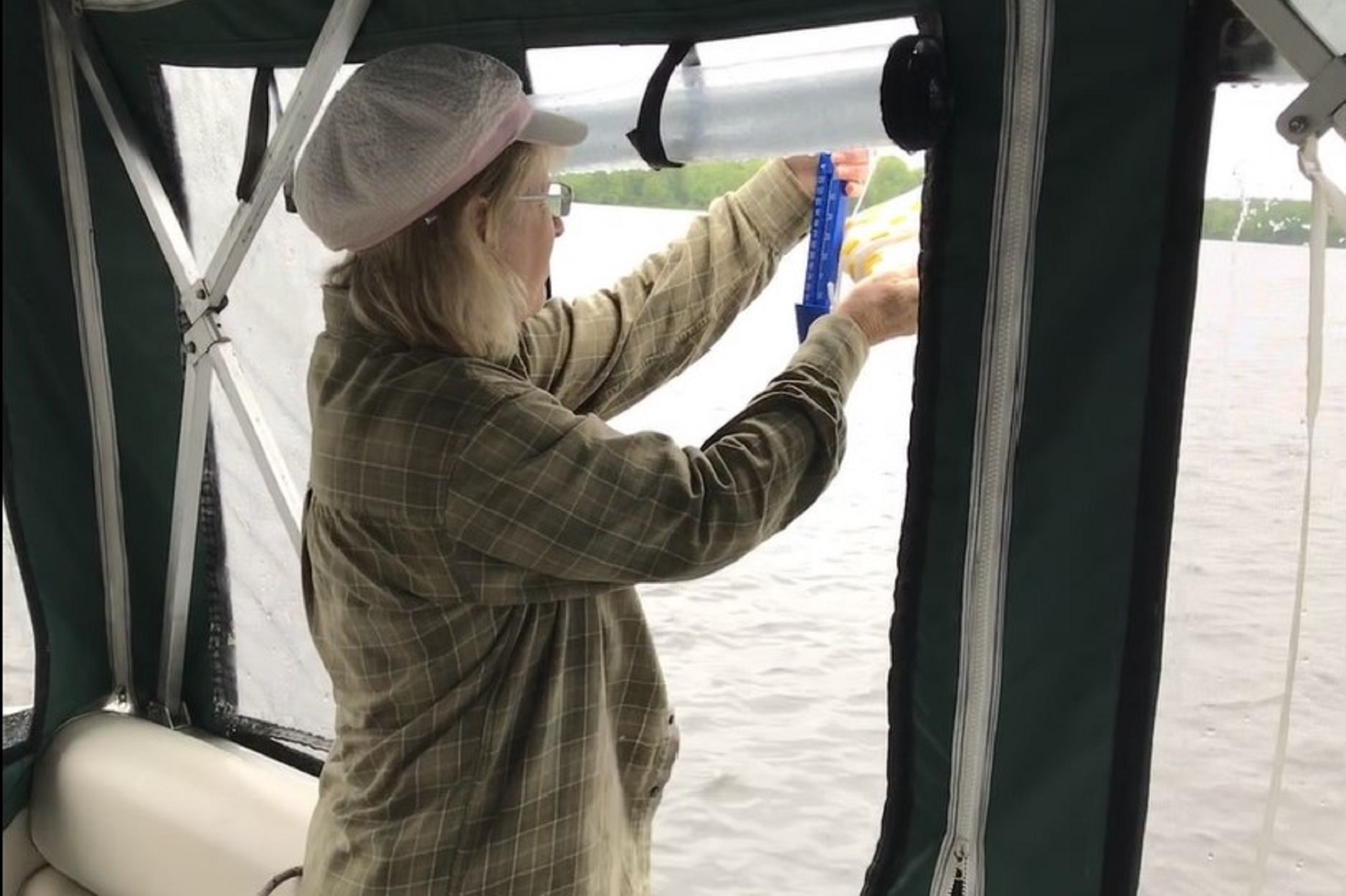Harmful algal blooms: What is the cause and what can Muskoka residents do?
Make sure municipal, provincial and federal representatives know research funding is needed.
By Geoff Ross.

The 2023 Muskoka Watershed Report Card notes that harmful algal blooms (HABs), which used to be quite rare in Muskoka, are becoming more frequent.
Unfortunately, scientists do not yet know what is causing increased HABs, making it nearly impossible to know what, if anything, can be done in response. Every HAB brings significant costs in dollars and quality of life.
Any algae population can increase rapidly, or “bloom,” when conditions become ideal for it. Severe blooms form a visible scum on the lake surface, damaging the appearance of the lake and the functioning of its ecosystem. If the bloom is caused by blue-green algae, also known as cyanobacteria, it is considered a HAB because of the risk it will release toxins that cause harm to people and animals.
What is causing this increase in HABs?
In the past, most algal blooms were found to be caused by excessive phosphorus concentration, usually due to fertilizer runoff from farming or the release of sewage treatment wastewater. Controlling phosphorus usually reduced the risk of algal blooms.
However, in Muskoka, as well as elsewhere, HABs are increasing while phosphorus concentrations are stable or decreasing. It appears something else is changing. But what?
Higher water temperature increases reproductive rates of algae, so you might suspect that increased HABs are driven by climate change. As well as warming lakes, climate change alters wind speed and precipitation. Together, these may impact lake mixing and stratification, and shoreline erosion.
In turn, these can make additional phosphorus available in the water that would not be detected by most current phosphorus monitoring (springtime only).
Climate change is also extending the ice-free period of lakes, lengthening the growing season for algal populations. Any one or a combination of these climate change impacts might be driving increased HABs. Or perhaps not.
Another possibility is that populations of zooplankton, tiny creatures that live in our lakes and graze on algae, are declining, causing a decrease in the amount of algae they consume. Loss of zooplankton could result from calcium levels decreasing to below the levels these creatures need to survive.
Algae-eating zooplankton may also be reduced by increased road salt entering lakes, or by the feeding of invasive spiny water fleas that prey upon zooplankton. And there may be still other causes of algal blooms not yet recognized.
Until we know more, efforts to deal with HABs risk putting time and funding in the wrong place, or even doing harm. What we need first is detailed scientific research to determine the causes of increased HABs. These are likely to be multiple and complex.
What can community members do?
Firstly, get involved. If you belong to a lake association, you could consider joining MWC’s Algae Monitoring Program. This “citizen science” approach aims to build the understanding of the ecology of algae in our lakes, and perhaps lead to identifying causes or cures for algal blooms.
Secondly, make sure your representatives at the municipal, provincial and federal levels know that substantial funding is needed for research on HABs, including research on the many possible contributing factors.
Finally, there are “no regrets” actions we can all take. Though increased phosphorus concentrations may not be the cause of increased HABs, we know that phosphorus is essential for the growth of all types of algae that can degrade the health and appearance of our waterbodies. Climate-change impacts likely make it more important than ever to avoid releasing phosphorus into water by managing septic tanks properly, protecting shorelines from erosion, and protecting wetlands that keep phosphorus from entering lakes.

This is the seventh in a series of articles from the Muskoka Watershed Council on “The State of Our Watershed” published on MuskokaRegion.com. Each explores environmental issues and management challenges revealed in the 2023 Muskoka Watershed Report Card. This week’s contributor is Geoff Ross, a retired professional engineer and past chair of the Muskoka Watershed Council. He holds a Master’s degree in human physiology and endocrinology.
